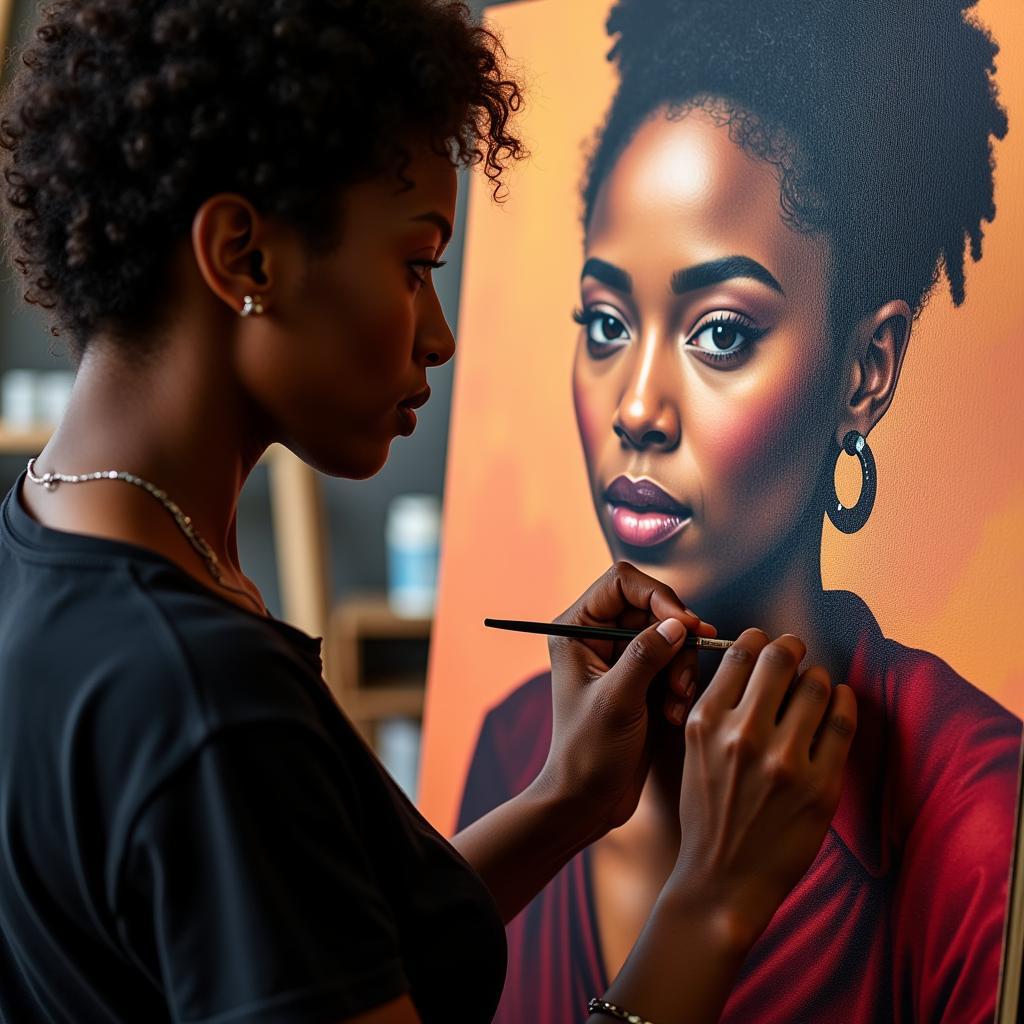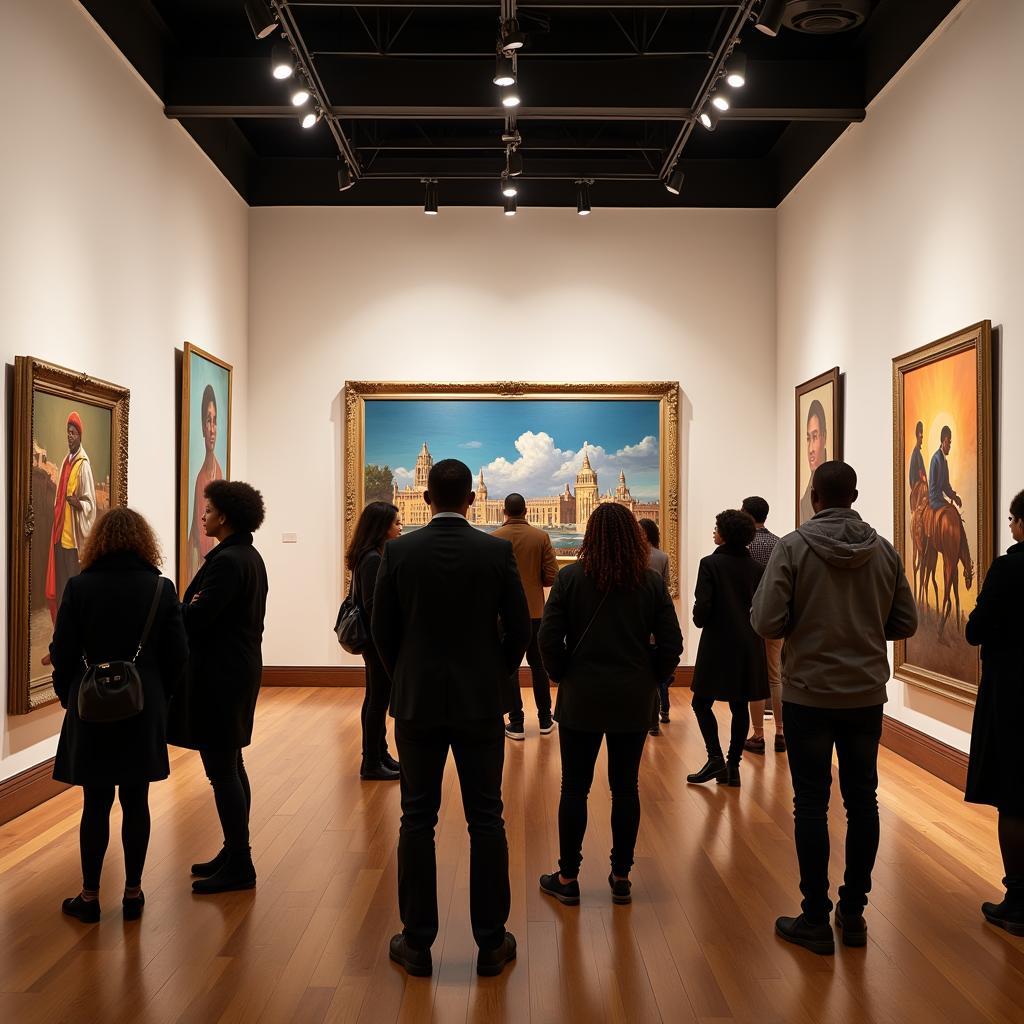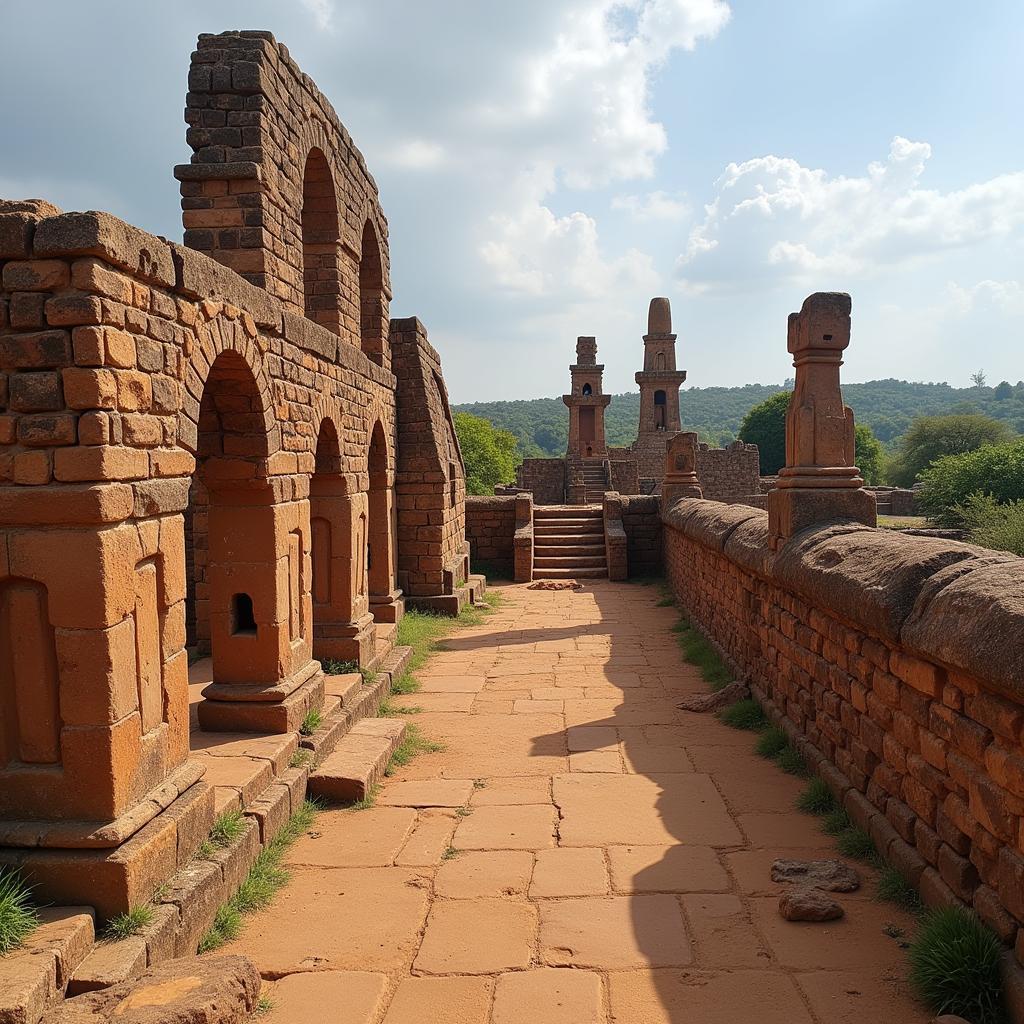African American Artists: Painters of Freedom, Identity, and Resilience
For centuries, African American artists have used paint as a powerful tool to express their experiences, document their histories, and challenge societal norms. From the Harlem Renaissance to the Black Arts Movement and beyond, their work has enriched the tapestry of American art while offering poignant reflections on race, identity, and social justice. This article delves into the captivating world of African American painters, exploring their significant contributions, unique styles, and lasting impact on the art world and beyond.
 African American Artist Painting a Portrait
African American Artist Painting a Portrait
Early Pioneers: Laying the Foundation
The story of African American painting begins in the face of adversity. During the 18th and 19th centuries, enslaved and free Black artists navigated a society rife with racial prejudice and limited opportunities. Despite these challenges, artists like Joshua Johnson, Robert S. Duncanson, and Henry Ossawa Tanner emerged, creating breathtaking landscapes, portraits, and genre scenes that challenged prevailing stereotypes and asserted their humanity. Johnson, considered the first professional African American painter, gained recognition for his portraits that captured the dignity and individuality of his subjects. Meanwhile, Duncanson’s romantic landscapes and Tanner’s evocative religious scenes earned them critical acclaim both in the United States and abroad. These early pioneers paved the way for future generations of artists to explore their creativity and express their unique perspectives on the world.
 Visitors Admiring Art at an African American Art Exhibition
Visitors Admiring Art at an African American Art Exhibition
The Harlem Renaissance: A Creative Explosion
The Harlem Renaissance, a period of unprecedented cultural flourishing in the 1920s and 1930s, witnessed a remarkable outpouring of artistic expression from African Americans. Painters like Aaron Douglas, Jacob Lawrence, and Palmer Hayden captured the vibrancy and dynamism of Black life in their art. Douglas, known for his signature style that blended geometric abstraction with African motifs, created iconic images that celebrated Black identity and heritage. Lawrence, a master storyteller, documented the African American experience through powerful narrative series depicting historical events, migration, and daily life. Hayden’s paintings, often imbued with social commentary, explored themes of racism, labor, and urban life. The Harlem Renaissance not only provided a platform for these artists to showcase their talent but also helped to redefine how Blackness was represented in American art.
African American Paintings: Beyond the Canvas
The influence of African American painters extends far beyond the canvas. Their art has sparked important conversations about race, identity, and social justice, challenging viewers to confront uncomfortable truths and embrace different perspectives. From the poignant depictions of slavery and segregation to the vibrant celebrations of Black culture and resilience, these artists have used their work to educate, inspire, and advocate for change.
Contemporary Voices: Continuing the Legacy
Today, a new generation of African American painters continues to push boundaries and challenge conventions. Artists like Kerry James Marshall, Kara Walker, and Theaster Gates are redefining what it means to be a Black artist in the 21st century, exploring themes of race, representation, and identity through innovative techniques and thought-provoking imagery. Marshall’s large-scale paintings celebrate the beauty and complexity of Black life, while Walker’s silhouettes confront the legacy of slavery and racism in America. Gates’s work often incorporates found objects and repurposed materials, drawing connections between art, history, and community. These artists, along with many others, are ensuring that the legacy of African American painting remains as vital and relevant as ever.


